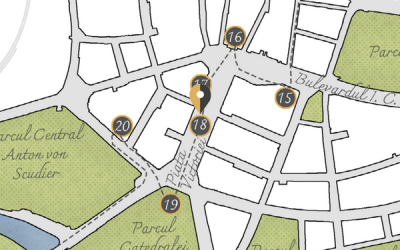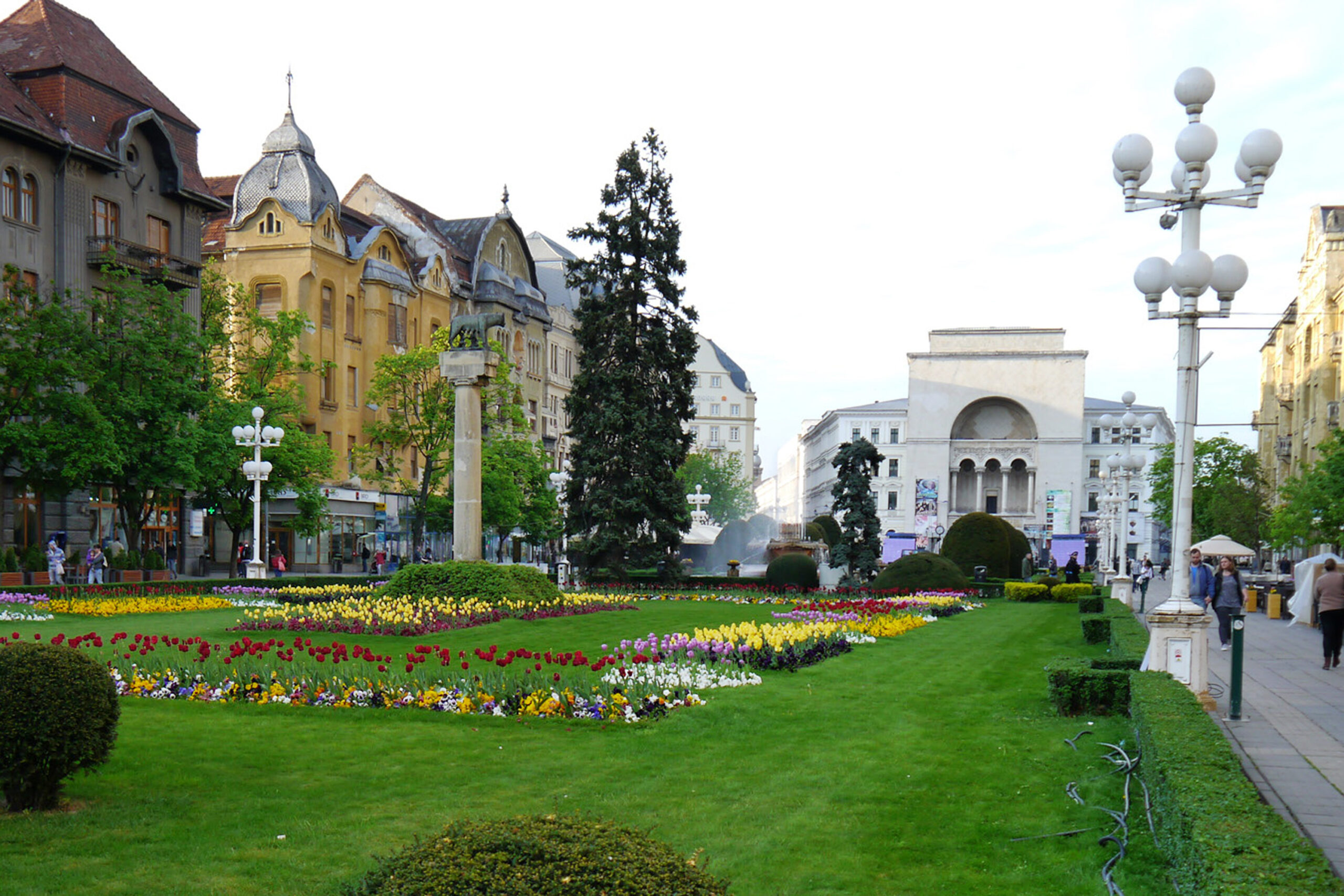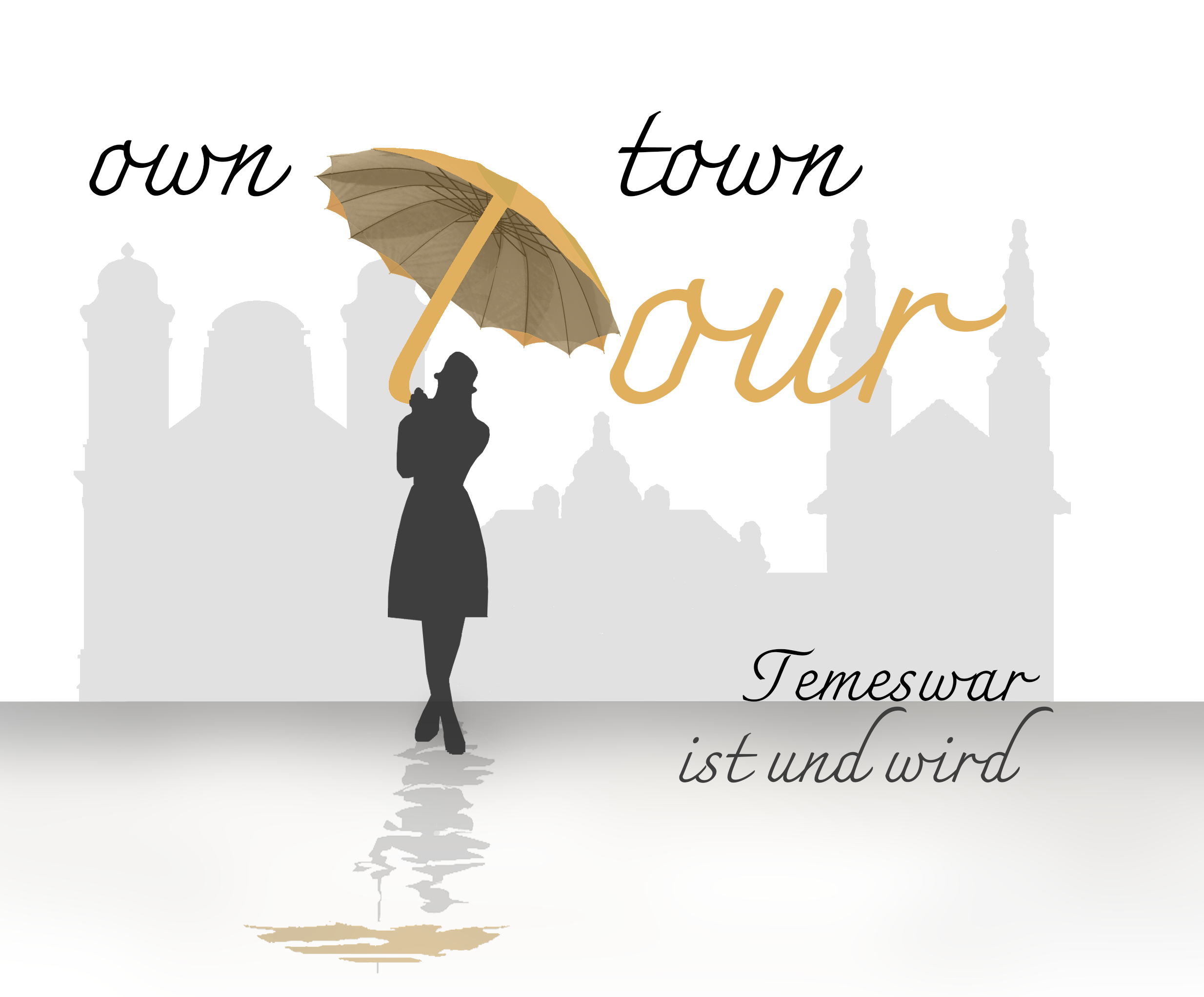Corso
Piața Victoriei, 6
from 1910
Public area


The City’s Promenade
The modern city centre between the Opera House and the Romanian Orthodox Cathedral is divided into two pedestrian promenades. On the western side runs the “Corso”, as it is commonly referred to by the inhabitants of Timisoara. The eastern promenade is called “Surrogate”, which literally means “replacement” or “proxy”. The high society of the Timisoara bourgeoisie strolled along the Corso with its luxury shops and expensive restaurants. On the other side, called “Maschik side” in the colloquial language of Timisoara (from Hungarian “másik” meaning “the other”), people with more modest incomes, less elegantly dressed, and youth met.
In between the “Corso” and the “Surrogate”, there is a long park with benches surrounded by bushes, shrubs and flowers that invite you to linger. The so-called “fish fountain” which has graced the square since the 1950s, contributes to the pleasant atmosphere of the green area. Originally built as a communist symbol in the shape of a five-pointed star, water gushes from the mouths of the bronze fish.
During communist times, the fountain was a meeting place for sports fans, who exchanged views on weekend football matches, but also liked to get political. Since the fountain was always surrounded by pigeons, they conspired to meet “with the pigeons” (“la porumbei”) to discuss politics and to gossip.
After the revolution, the water basin was given a round shape as part of its first renovation, which was also retained in the recent renovation. The fountain is still a popular photo motif and attraction for locals and visitors alike.
Another landmark on the Corso is the Capitoline Wolf, perched on a column just past the fountain and pointing in the direction of the cathedral. The statue depicts the founding brothers of Rome, Romulus and Remus, suckling a wolf mother, and is an exact replica of the Lupa Capitolina in Rome. It was a gift from the city of Rome in 1926 in recognition of the common Roman roots of the Italian and Romanian peoples.
After a gathering at the fish fountain or after a stroll through the city, we have an unlimited selection of inviting street cafés whose tables line the edge of the promenade.
Tour sights
- 1. Theresia Bastion
- 2. Lutheran Church
- 3. Union Square
- 4. Saint George’s Cathedral
- 5. Serbian Orthodox Cathedral
- 6. Miksa (Max) Steiner Palace
- 7. Brück House
- 8. Dicasterial Palace
- 9. Klapka Library
- 10. The “Guild Tree”
- 11. St. George's Square
- 12. Prince Eugene House
- 13. Citadel Synagogue
- 14. Liberty Square
- 15. Huniade Castle
- 16. National Opera House
- 17. Victory Square
- 18. Corso
- 19. Orthodox Cathedral
- 20. Piarist Ensemble
- 21. Reformed Church
- 22. Doja Street
- 23. Journey through Time
- 24. Rose Garden

